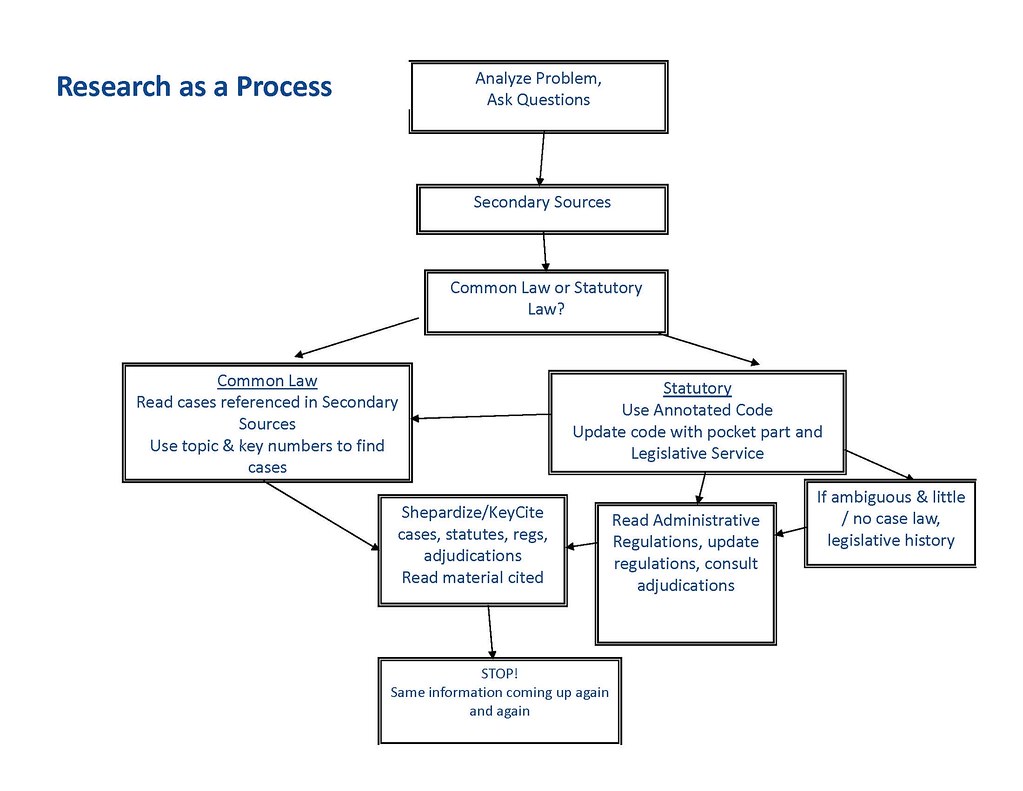Attorneys love to give law clerks and new associates research problems involving multiple jurisdictions. These can be extremely time consuming to compile AND difficult to compile because different statutes can use different language to describe the same thing and you won’t know what terms each jurisdiction uses. Look at drunk driving statutes as an example. Some call it driving while intoxicated (DWI), some call it operating while intoxicated (OWI), some call it driving under the influence (DUI) etc. If someone had already done all or part of the work for you, why not take advantage of that? That’s where the 50-state surveys come in. Just be aware going in that there is no guarantee that a survey exists on the topic you need and that these surveys are just a starting point. You should also consult the primary sources—the state laws themselves. Surveys can be very useful guides, but you will need to update and verify them before relying on them.
Where do statutes fall in the research process? Well, if you’re following a basic research strategy, after you consult secondary sources and determine that your issue is statutory, you’ll want to go research in an annotated code volume.

The first step in the research process is to analyze the problem and to ask questions. The second step is to consult secondary sources. The third step is to answer the question is it common law or statutory or do you have a cause of action that can be filed under both? Your secondary source research can help with that.The fourth step branches out depending on if you have a common law or statutory law issue. If it is a common law issue, you will read cases suggested by your secondary sources and find cases using headnotes and topic and key numbers. If your issue is statutory, you will consult the annotated code. You want to update the annotated code with the pocket part or supplement and the Legislative Service if you are working with print resources. The annotated code will give you case summaries for important cases that interpret the statute. After consulting the annotated code for a statutory issue, you will move on to finding cases. You will look up the full-text of the cases you found in the annotated code, look at the cases suggested by secondary sources, and look for more cases using the headnotes and topic and key numbers. If you are not able to find case law for your statutory issue and the statutory language is ambiguous, you will do legislative history research. Also, any time you have a statutory issue, you will need to find any applicable administrative regulations and update those regulations.You will want to consult administrative adjudications. Regardless of whether you have a statutory or a common law issue, you will need to make sure your cases are good law. You will Shepardize or KeyCite your cases. If this is a statutory issue, you will also need to Shepardize or KeyCite the statutes and regulations. Stop researching when you keep finding the same information over and over again.
University of Cincinnati Libraries
PO Box 210033 Cincinnati, Ohio 45221-0033
Phone: 513-556-1424
University of Cincinnati
Alerts | Clery and HEOA Notice | Notice of Non-Discrimination | eAccessibility Concern | Privacy Statement | Copyright Information
© 2025 University of Cincinnati
